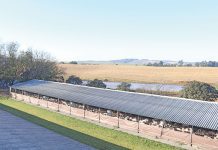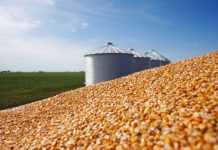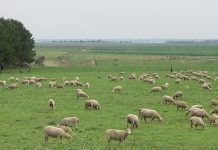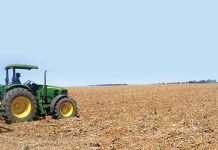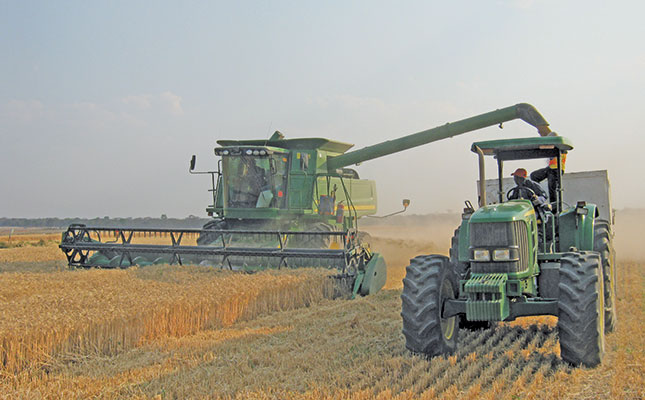
Photo: FW Archive
Almost every business experiences financial difficulties from time to time. Farming operations, however, face greater risks than many other businesses, which makes it even more important for farmers to stay on top of their game.
Theo Rabe, CEO of agribusiness NWK, explains that farming returns are significantly lower than for most other businesses, averaging between 5% and 7% depending on the commodity.
To make matters worse, farmers are price-takers, with little or no influence over the market. So a poor yield is not necessarily compensated for by a better price.
In addition to this, farmers have to cope with changing climatic conditions, and recent times have seen more droughts, changes in rainfall patterns and extreme weather phenomena.
To shield their businesses against these challenges, farmers should, first of all, be aware of their financial situation. According to Rabe, many do not have a clear idea of their income and expenditure.
Do a financial analysis
A financial analysis will not only allow a farmer to evaluate the current state of the operation, but help him or her to predict future performance and make informed decisions by identifying wastage and areas where operations can be improved.
Nevertheless, predicting future performance is easier said than done, as many variables are at play. Ernst Janovsky, former head of Absa’s Agribusiness Centre of Excellence, advises farmers to base these predictions on long-term historic performance and to take into account long-term climatic and macro-economic trends, such as exchange rates and economic growth.
During the good years, a farmer should avoid overstocking or buying things that don’t add value to the business. It’s also crucial to save up for the tough times by building a feed bank, for example, or paying off debt in a ‘flexi reserve’ account.
When carrying out a financial analysis, many farmers tend to underestimate their costs and also forget that they and their family need to live off the farm.
“You need to work out how much money you and your family need to live on before calculating the amount of debt the farm is able to absorb,” Janovsky says.
Re-evaluate your strategy
All is not well if the operation is struggling to service debt or has been moving sideways for several years, stresses Rabe. And a farmer should certainly re-evaluate his or her business strategy if the enterprise is showing a long-term decline in income, which might indicate that the commodity is no longer viable for that specific region.
“The farmer might have to stop planting on marginal land and increase the livestock component, for example, or adopt alternative crops to diversify climate and market risks.”
Problems that prevent the farm from reaching its full production potential, such as compaction or poor drainage, need to be addressed. Production practices, too, should be examined; these include proper soil preparation, planting at the optimal density and depth, applying fertilisers and pesticides correctly, harvesting at the right time, and marketing crops to maximise sales and profit.
Be honest
Farmers should always play open cards with their creditors about their financial health.
“Avoiding phone calls, withholding information and trying to hide and secretly sell assets will destroy your relationship with your creditors,” explains Rabe.
“Instead of working with the farmer, creditors might then focus on protecting their own interests.”
In addition, farmers should talk to their creditors sooner rather than later. Nico Groenewald, head of Agribusiness at Standard Bank, explains that farmers who have their back against the wall generally have very few options left.
“Usually, they’ve already made quite a few desperate moves to recover the situation. These might have had a better outcome if they’d been supported by a financial service provider or bank.”
Janovksy points out that banks and agricultural financiers understand the cyclical nature of farming, and therefore tend to take a long-term view on farming debt. For this reason, they are generally keen to carry farmers who are struggling to meet their financial obligations for a year or two.
“After that, however, they tend to become more cautious,” he warns.
Talks with financiers should be honest and realistic. Janovksy stresses that a farmer should not simply settle for any deal when negotiating new credit terms, but inform the financier of what he or she would be able to afford and how the higher rate would affect them.
“Don’t settle for loans with rates that will exacerbate the situation,” he says.
Rabe adds that farmers should guard against using short-term loans to finance long-term interventions or infrastructure, as this can drastically reduce cash flow.
Get rid of non-essentials
To gain some breathing space, a farmer under financial strain could get rid of assets that are no longer needed. This could mean selling old equipment, and even that beach house or game farm that is not bringing in any money. Alternatively, Rabe suggests, there is the possibility of selling off a part of the farm that might not affect the heart of the operation.
“A farmer shouldn’t be sentimental and keep land just because it has been in the family for many years or because it’s a nice-to-have,” he says.
He stresses, however, that these decisions should be made sooner rather than later to avoid being forced into selling something below market value.
Groenewald advises farmers to consult their bookkeepers and tax advisers when making these decisions, as many of these actions might have tax implications.
Live within your means
During hard times, it is relatively easy for livestock producers to reduce their costs, explains Janovksy. They can downscale production, live off their own sheep or cattle, and significantly reduce their fuel costs by using their bakkies only when needed.
It is far more difficult for fruit and grain farmers to reduce input costs, as this can negatively affect the harvest. These farmers should nevertheless think twice before incurring more debt by buying a new bakkie, harvester or other equipment.
“Farmers often argue that they need to replace equipment every three to five years. But if the new implement doesn’t improve your production efficiencies enough to justify the increased associated cost, you’d be better off with the older version even though maintenance might be higher,” says Rabe.
According to Janovsky, most farms that fail financially do so not because they are not viable, but because of external factors such as family members. Children that have to be supported at university, for example, may take a huge chunk out of the farming budget.
Moreover, once they have qualified, they may want to return to the farm with their own family, hoping to maintain the same lifestyle as was provided by their parents.
“The farm, which might have struggled to support one family, then suddenly has to support two,” Janovksy says.
This is why it is of crucial importance to have a well-structured succession plan stipulating the benefits, if any, that future generations will be able to derive from the farm.
Email Theo Rabe at [email protected], or Nico Groenewald at [email protected], or Ernst Janovsky at [email protected].

